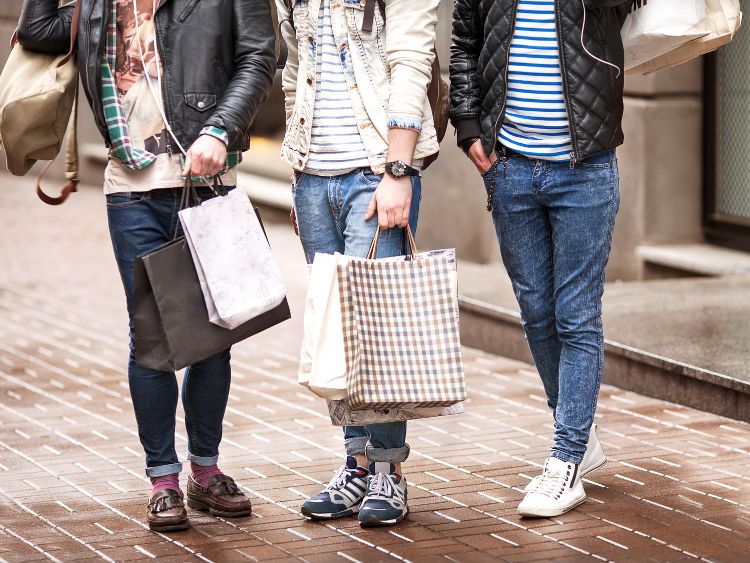Fashion shows are the heartbeat of the fashion industry, offering a spectacular showcase of creativity, innovation, and artistry. From the stunning runway designs to the glitz and glamour that surrounds these events, fashion shows capture the imagination of fashion enthusiasts and industry insiders alike. But what really goes into a fashion show, and why do they hold such a significant place in the fashion world?
In this article, we’ll dive deep into the world of fashion shows, covering everything from their history to how they’re put together today. If you’re curious about what happens behind the scenes or just want to understand the allure of these catwalk spectacles, keep reading!
What is a Fashion Show?
A fashion show is a live presentation where designers showcase their latest collections, usually during the official fashion weeks held in fashion capitals like Paris, Milan, New York, and London. Models walk down the runway wearing meticulously crafted designs, giving attendees an up-close look at what’s to come in the upcoming season. Fashion shows are typically attended by buyers, media, influencers, celebrities, and fashion lovers who are eager to see the latest trends.
A Brief History of Fashion Shows
Fashion shows have evolved tremendously over the years. Believe it or not, they date back to the mid-19th century when English designer Charles Frederick Worth, known as the “father of haute couture,” first presented his collections to private clients. By the early 20th century, fashion shows had become more public and larger in scale, particularly in Paris.
However, the modern-day fashion show we recognize—with its highly stylized runways, bright lights, and elaborate sets—came into its own in the 1960s and 1970s. It was a period that marked the beginning of designers using fashion shows not just to present clothing but to make a statement about society, culture, and even politics.
How Fashion Shows are Organized Today
Planning a fashion show is no small feat. Every detail, from the model casting to the lighting, must be carefully curated to match the designer’s vision. Here’s a step-by-step breakdown of how these glamorous events are organized:
- Concept Development: Designers or creative directors first decide on the theme or concept of their show. This could be inspired by anything from art, culture, or nature, and it often sets the tone for the collection.
- Collection Design: This is where the magic begins. Designers spend months crafting their collections, focusing on fabrics, colors, silhouettes, and patterns that align with their vision.
- Venue Selection: Choosing the right venue is crucial. Some fashion shows take place in grand, historic locations, while others opt for modern, minimalistic spaces.
- Model Casting: Models are selected based on the look and feel of the collection. High-profile designers often choose models that reflect the diversity of their target audience.
- Hair and Makeup: The overall styling, including hair and makeup, plays a pivotal role in bringing the designer’s vision to life.
- Music and Lighting: The atmosphere of a fashion show is often determined by the combination of music and lighting. Designers may choose dramatic music to highlight a bold collection or softer tunes for a more understated presentation.
- Choreography and Rehearsals: Choreographers ensure models know exactly how to walk and where to pose, creating a seamless flow of garments down the runway.
- Runway Day: Finally, it all comes together on show day. Fashion weeks often have a packed schedule, with multiple shows taking place back-to-back, meaning that organization and timing are everything!
The Role of Fashion Shows in Trendsetting
Fashion shows serve as the trend-setting barometer for the fashion world. The collections presented on runways today will inspire retail stores, fast fashion brands, and even your closet next season. For designers, a successful show can catapult them into stardom, and for attendees, it’s a chance to witness fashion history in the making.
Brands often showcase their most avant-garde pieces during these events, knowing that the runway is their stage to push boundaries and challenge fashion norms. However, while the clothes on the runway may be bold, it’s the more wearable interpretations of these designs that eventually end up on the high street.
Fashion Weeks: Where and When?
Fashion weeks are the pinnacle of the fashion calendar. The ‘Big Four’ fashion weeks take place biannually in the following cities:
- New York: Usually held in February and September, New York Fashion Week is known for its edgy and commercial styles.
- London: London Fashion Week is celebrated for its bold, youthful, and sometimes eccentric designs.
- Milan: The Italians bring their flair for luxury and craftsmanship to the runway during Milan Fashion Week.
- Paris: Often seen as the grand finale, Paris Fashion Week showcases the best of haute couture and high fashion.
These fashion weeks dictate the trends for the upcoming season and influence the entire fashion ecosystem, from designers to retailers and even influencers.
The Impact of Digital Fashion Shows
The advent of digital media has revolutionized how we experience fashion shows. In recent years, many fashion brands have turned to virtual runways, allowing viewers from all around the globe to watch the latest collections from the comfort of their homes.
This trend took off during the COVID-19 pandemic, when in-person shows were impossible. Brands adapted by hosting live-streamed events, 3D virtual runways, and even interactive shows where viewers could shop directly from the runway.
How to Prepare for Attending a Fashion Show
Whether you’re attending a small boutique show or the grand spectacle of a fashion week, it’s essential to know how to navigate the fast-paced environment of fashion shows. Here are some key tips:
- Dress the Part: Fashion shows are all about the outfits, and attendees are often expected to dress up. Show off your personal style, but remember that comfort is key—you’ll likely be standing or walking a lot.
- Arrive Early: Fashion shows are notoriously punctual. It’s always a good idea to arrive at least 15-20 minutes early to grab a good seat and settle in before the show begins.
- Respect the Space: As glamorous as fashion shows are, they can also be quite chaotic. Respect the boundaries set by the organizers and always ask permission before taking photos or entering restricted areas.
- Network, Network, Network: Fashion shows are prime opportunities for networking. Don’t hesitate to strike up a conversation with fellow attendees or industry insiders.
FAQs about Fashion Shows
- What is the purpose of a fashion show? Fashion shows give designers a platform to showcase their latest collections and ideas. They help set trends and allow buyers, media, and fashion enthusiasts to experience new styles firsthand.
- Who attends fashion shows? Fashion shows are typically attended by a mix of media, buyers, influencers, celebrities, and industry insiders. In recent years, some brands have opened up their shows to the public through digital live streams.
- How do designers choose models for fashion shows? Designers usually select models that fit the look and feel of their collection. Diversity in model casting has become increasingly important, with many designers striving to reflect the varied identities of their audiences.
- Can anyone attend a fashion show? While high-profile fashion shows like those during Fashion Week are invitation-only, some events are open to the public, especially with the rise of digital shows.
- What happens behind the scenes at a fashion show? Behind the scenes, it’s all about preparation. From makeup and hairstyling to last-minute fittings, it’s a flurry of activity as the production team works to bring the designer’s vision to life.
Conclusion
Fashion shows are more than just glamorous runway events. They serve as the epicenter of fashion innovation and creativity, setting the tone for global trends. From the concept and collection design to the music and models, every aspect of a fashion show plays a role in telling a unique story.
In the digital age, these shows have become even more accessible, allowing fashion lovers everywhere to experience the magic firsthand. So, whether you’re attending in person or watching online, fashion shows remain a vibrant, exciting part of the fashion world.
When it comes to finding reliable information online, there are numerous platforms catering to various interests and needs. For parents, websites like Top Websites for Child Health and Parenting provide invaluable insights into raising healthy, happy children. Meanwhile, couples planning their big day can rely on The Ultimate Guide to Wedding Planning Websites for expert advice and recommendations.
For those navigating legal matters, Comprehensive Reviews of Legal Websites offers detailed evaluations of top platforms. Finance enthusiasts can explore Top Financial Websites for trustworthy advice on managing their money. Additionally, business and finance professionals will benefit from Reviews of Top Business and Finance Websites, providing a go-to resource for industry knowledge.
For those with a passion for travel, Top Travel Websites review the best platforms for booking and exploring the world, while Comprehensive Reviews of Fashion and Lifestyle Websites help fashion-forward individuals stay on trend.
Whether you’re into automotive reviews, technology updates, animal advocacy, health and wellness resources, or home improvement tips, there are websites that cater to each of these interests. For instance, you can check out Top Automotive Websites for car-related guidance or dive into Top Technology Websites for the latest in tech innovations.
Lastly, if you’re in the business of digital marketing, The Ultimate Review of Digital Marketing and SEO Websites is your comprehensive guide to improving your online presence.






